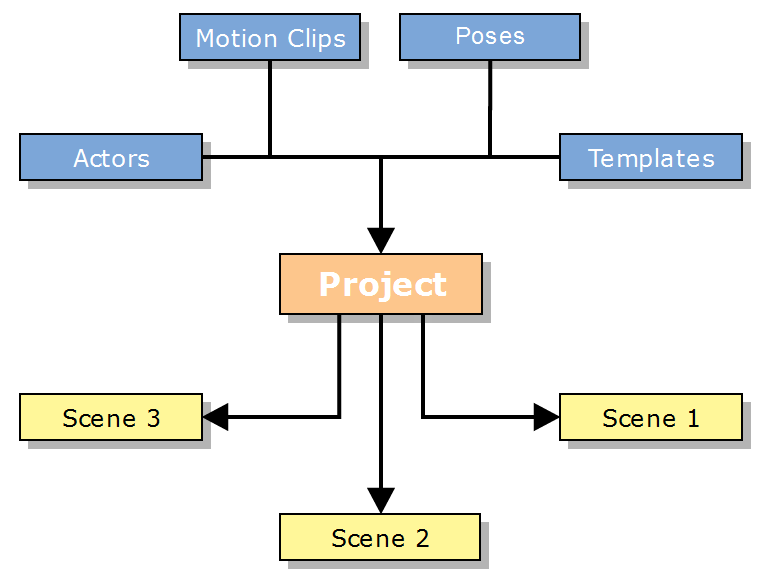Page History
This page provides information on how Chaos Anima organizes your projects.
Overview
...
Before Chaos Anima
anima® Design Principles
Before anima®, generating realistic and compelling 3D character animations had always been a very complex process that required a lot of time, knowledge, and expertise in multiple technics (like modeling, rigging, skinning, and animation).
Moreover, populating 3D scenes with multiple of those complex characters exponentially characters exponentially increased the complexity and resources needed. Therefore, we decided to create a new tool, anima®Chaos Anima, to try to make that process as simpler and efficient as possible.
Anima Design Principles
...
There are 2 basic concepts involved in the creation of films with animated crowds:
...
| Fancy Bullets | ||
|---|---|---|
| ||
|
...
|
...
|
...
|
...
|
...
|
...
|
...
|
Both are combined (assets and scenesassets and scenes) inside each project to each project to maximize the optimization of the resources. For example, if the same actor is used multiple times in the same or in different scenes from the same project, it is only stored once and then referenced in each one of those scenes along with the parameters that define its particular position and behavior.
The assets can be stored at the project level or at the application level.
For example, the models from the metropoly® library the library can be used in all projects (that is why they are stored in an external Purchases folder that is defined in the anima® Anima preferences).
On the other hand, assets like the collision backgrounds the collision backgrounds (used to place the actors) are stored at the project level because it is not likely to use the same environment in different films, but it is to use the same background on different shots (scenes) of the same film.
Project Level vs Scene level
...
Refer to the list below for a more detailed classification:
...
Properties Saved at the Project Level
...
| Fancy Bullets | ||
|---|---|---|
| ||
|
...
|
...
|
...
|
...
|
...
PROPERTIES SAVED AT THE SCENE LEVEL
...
Properties Saved at the Scene Level
...
| Fancy Bullets | ||
|---|---|---|
| ||
|
...
|
...
|
Project Folder Structure
...
| Section | |||||
|---|---|---|---|---|---|
|
...
|
...
|
...
|
|
...
|
...
|
...
|
...
|
...
|
...
|
...
|
...
|
...
|
...
|
...
|
...
|
...
|
...
|
...
|
...
|
...
|
...
|


